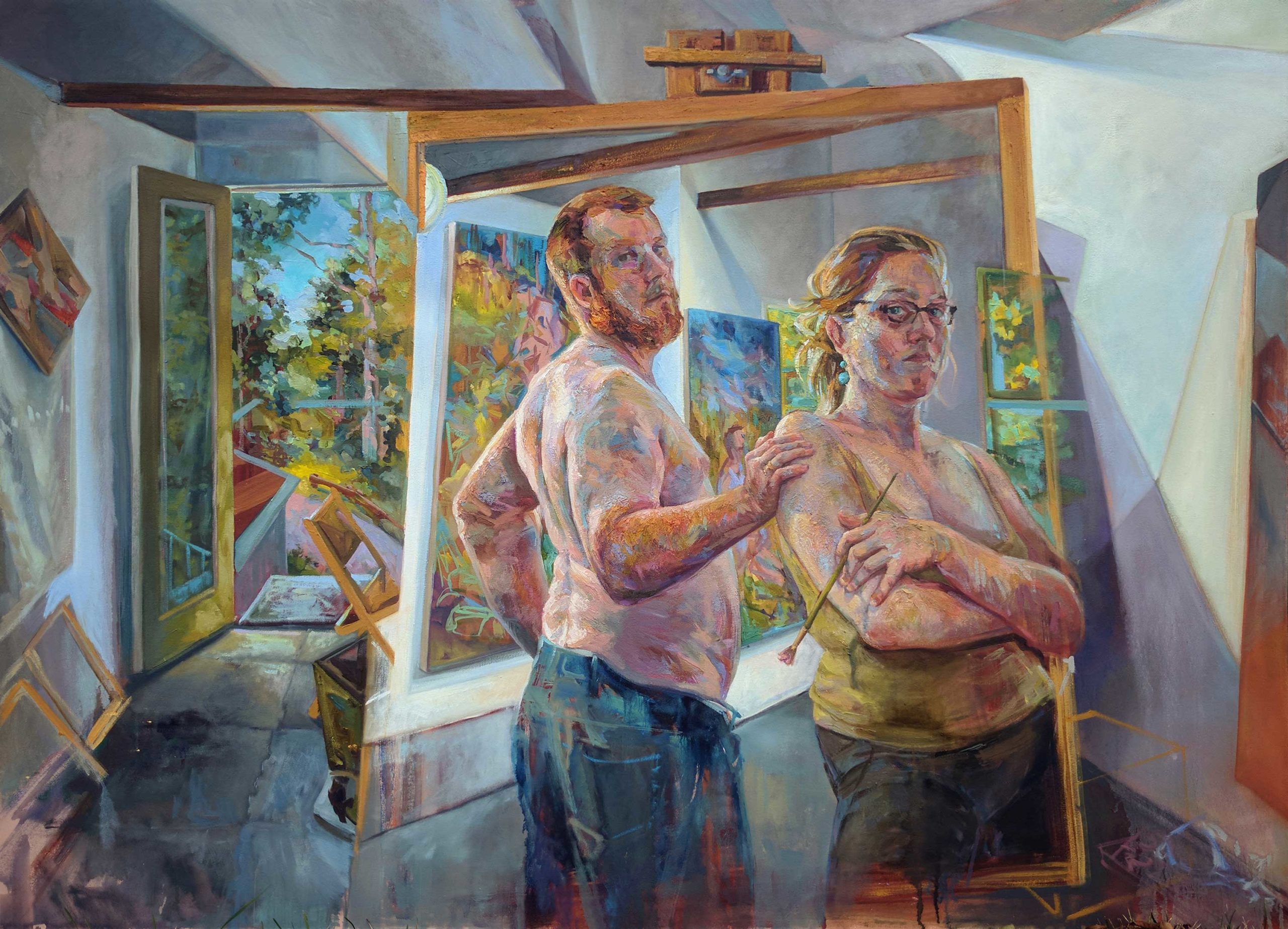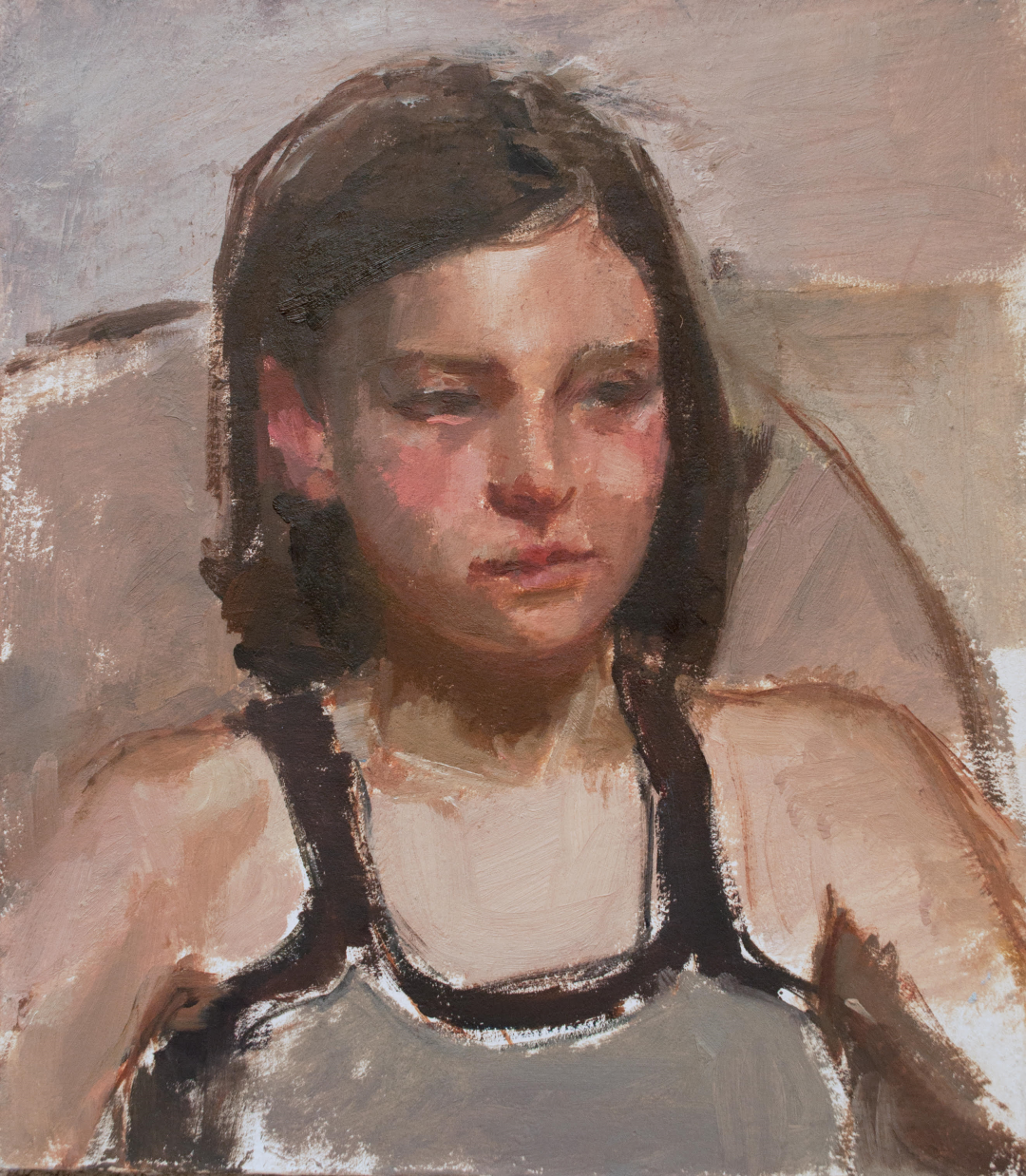Figurative Oil Painting: From Idea to Canvas - A Step-by-Step Strategy
Figurative Oil Painting: From Idea to Canvas - A Step-by-Step Strategy
Blog Article
The Development of Figurative Oil Painting: Recognizing Its Historic Importance and Modern Interpretations
The advancement of figurative oil paint serves as an engaging lens via which to take a look at the interaction between imaginative expression and historical context. Contemporary musicians, attracting from this rich heritage, are currently reinterpreting the human figure in methods that test conventional stories.
Beginnings of Figurative Oil Paint
The origins of figurative oil paint can be traced back to the early Renaissance in Europe, specifically in the 15th century. This period marked a substantial departure from the stiff kinds and flat representations particular of middle ages art. Artists began to discover naturalism, stressing the human figure and its emotional expression. The growth of oil paint enabled greater depth of shade and information, enhancing the realism and vibrancy of their job.

In this transformative age, numbers were commonly shown within contextually rich environments, showcasing not just their physical characteristics yet likewise their psychological states. Leaders such as Jan van Eyck and Titian utilized the medium's versatility, employing layering strategies to attain luminosity and appearance. This development promoted the representation of complex textiles and the subtleties of skin tones, contributing to the development of portraiture and narrative scenes.
Moreover, the Renaissance emphasis on humanism fostered a recognition for distinctiveness, which consequently affected artists to develop even more vibrant and relatable figures - figurative oil painting. Because of this, figurative oil painting arised as a powerful lorry for narration and psychological engagement, laying the groundwork for future imaginative movements and styles
Trick Historical Motions
Significant historic movements have actually shaped the evolution of metaphorical oil paint, each contributing distinct approaches and strategies that increased the medium's possibilities. The Renaissance marked a crucial moment, stressing realism and the human kind, with musicians like Leonardo da Vinci and Michelangelo pressing the boundaries of physiological precision and perspective. Following this, the Baroque period brought dramatic contrasts of light and darkness, exemplified by Caravaggio, that infused religious themes with intense emotionality.
The 19th century presented Romanticism and Realism, where artists such as Delacroix and Courbet challenged timeless suitables, focusing on specific expression and day-to-day life. The advent of Impressionism additionally revolutionized the medium by stressing the impacts of light and color, causing a departure from traditional representation.
In the early 20th century, activities like Expressionism and Cubism redefined figurative painting through abstraction and the exploration of psychological depth. Each of these motions not only showed the social changes of their times yet also prepared for modern interpretations. The interplay in between these historic motions has actually developed a rich tapestry of styles and philosophies, affecting modern musicians in their quest of catching the human experience on canvas.
Strategies and Materials Development

Throughout the Baroque period, methods such as chiaroscuro and sfumato emerged, enhancing the emotional resonance of figurative make-ups. Musicians began to explore lusters and impasto, controling texture and luminance. By the 19th century, advancements like making use of pre-mixed paints in tubes revolutionized accessibility, allowing musicians to repaint en plein More Bonuses air and capture the short lived impacts of light.
The 20th century observed the intro of artificial pigments and tools, which broadened the palette and altered the consistency of oil paints. The exploration of brand-new application strategies, such as scheme knives and brushes of varying stiffness, more varied creative expression. Jointly, these advancements mirror the advancing connection in between products, methods, and the imaginative vision intrinsic in metaphorical oil paint.

Contemporary Analyses
Contemporary analyses of metaphorical oil paint show a dynamic dialogue in between custom and innovation, where musicians challenge developed standards and check out diverse styles. This development materializes in various ways, as modern artists mix classic strategies with modern principles, typically attending to social, political, and individual narratives.
Several practitioners attract ideas from historical jobs, yet they infuse their items with contemporary point of views, utilizing the human form as a car for commentary on gender, society, and identification. Artists increasingly experiment with abstraction, distortion, and multimedias, which enables a more comprehensive analysis of the number and its context.
In addition, using vivid shade combinations and non-traditional structures usually offers to disrupt typical checking out experiences, provoking important engagement from audiences. This shift in emphasis extends past appearances; it mirrors an expanding understanding of the intricacies of human experience in an interconnected globe.
As metaphorical oil painting proceeds to evolve, it remains an important medium for exploring the nuances of modern life, personifying both a respect for heritage and a dedication to modern idea. The outcome is an abundant tapestry of expression that reverberates with the intricacies of the modern human condition.
Influence On Modern Art
The effect of metaphorical oil painting on modern art is extensive, as it has continually motivated a myriad of imaginative activities and methods throughout the 21st and 20th centuries. From Expressionism to Surrealism and past, the exploration of the human number has actually stayed a main style, enabling musicians to convey intricate emotions and narratives. This emphasis on metaphorical representation has actually brought about a re-examination of typical techniques, leading to cutting-edge approaches that blend realistic look with abstraction.
Furthermore, contemporary musicians have embraced metaphorical oil painting as a method to resolve social and political issues, making use of the medium to test assumptions of society, gender, and identity. The renewal of interest in figurative work in recent years mirrors a longing for connection in an increasingly electronic world, where human experience and emotion are critical.
Furthermore, the dialogue in between figurative oil paint and contemporary art appears in the jobs of artists such as Kehinde Wiley and Jenny Saville, that attract on historic recommendations while instilling their pieces with contemporary relevance. Ultimately, metaphorical oil paint remains to shape and redefine contemporary creative expression, emphasizing its long-lasting significance in the art world.
Final Thought
The development of figurative oil paint underscores its historical importance and flexibility across various artistic activities. Eventually, metaphorical oil painting continues to be an important medium for discovering the human experience, resonating profoundly in today's electronic landscape.
The development of figurative oil paint serves as anchor an engaging lens through which to check out the interplay in between imaginative expression and historic context.Considerable historical Learn More movements have formed the development of metaphorical oil painting, each contributing special ideologies and strategies that increased the medium's possibilities.As historical motions formed the trajectory of metaphorical oil paint, the methods and products employed by musicians have additionally undertaken considerable changes. figurative oil painting.The influence of metaphorical oil painting on contemporary art is profound, as it has actually consistently influenced a myriad of creative motions and methods throughout the 20th and 21st centuries.The advancement of metaphorical oil paint highlights its historic significance and adaptability throughout various imaginative activities
Report this page